Amin Ramezani
Knowledge Distillation and Enhanced Subdomain Adaptation Using Graph Convolutional Network for Resource-Constrained Bearing Fault Diagnosis
Jan 13, 2025



Abstract:Bearing fault diagnosis under varying working conditions faces challenges, including a lack of labeled data, distribution discrepancies, and resource constraints. To address these issues, we propose a progressive knowledge distillation framework that transfers knowledge from a complex teacher model, utilizing a Graph Convolutional Network (GCN) with Autoregressive moving average (ARMA) filters, to a compact and efficient student model. To mitigate distribution discrepancies and labeling uncertainty, we introduce Enhanced Local Maximum Mean Squared Discrepancy (ELMMSD), which leverages mean and variance statistics in the Reproducing Kernel Hilbert Space (RKHS) and incorporates a priori probability distributions between labels. This approach increases the distance between clustering centers, bridges subdomain gaps, and enhances subdomain alignment reliability. Experimental results on benchmark datasets (CWRU and JNU) demonstrate that the proposed method achieves superior diagnostic accuracy while significantly reducing computational costs. Comprehensive ablation studies validate the effectiveness of each component, highlighting the robustness and adaptability of the approach across diverse working conditions.
Physics-Informed Deep Learning and Partial Transfer Learning for Bearing Fault Diagnosis in the Presence of Highly Missing Data
Jun 16, 2024Abstract:One of the most significant obstacles in bearing fault diagnosis is a lack of labeled data for various fault types. Also, sensor-acquired data frequently lack labels and have a large amount of missing data. This paper tackles these issues by presenting the PTPAI method, which uses a physics-informed deep learning-based technique to generate synthetic labeled data. Labeled synthetic data makes up the source domain, whereas unlabeled data with missing data is present in the target domain. Consequently, imbalanced class problems and partial-set fault diagnosis hurdles emerge. To address these challenges, the RF-Mixup approach is used to handle imbalanced classes. As domain adaptation strategies, the MK-MMSD and CDAN are employed to mitigate the disparity in distribution between synthetic and actual data. Furthermore, the partial-set challenge is tackled by applying weighting methods at the class and instance levels. Experimental outcomes on the CWRU and JNU datasets indicate that the proposed approach effectively addresses these problems.
Learning spatiotemporal features from incomplete data for traffic flow prediction using hybrid deep neural networks
Apr 21, 2022
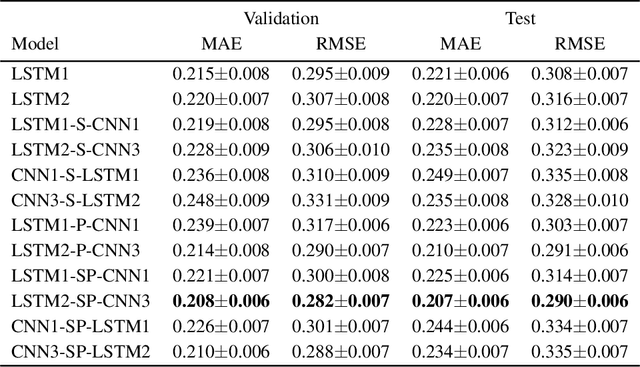
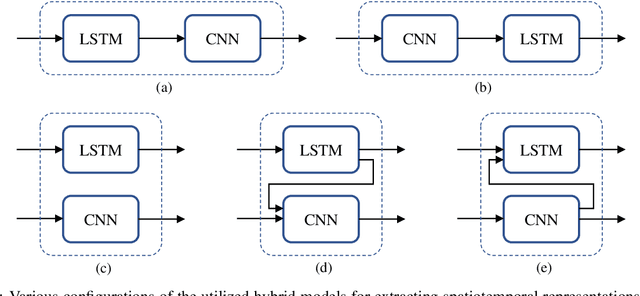
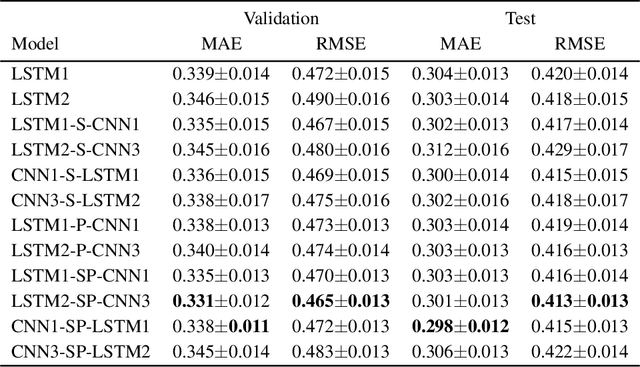
Abstract:Urban traffic flow prediction using data-driven models can play an important role in route planning and preventing congestion on highways. These methods utilize data collected from traffic recording stations at different timestamps to predict the future status of traffic. Hence, data collection, transmission, storage, and extraction techniques can have a significant impact on the performance of the traffic flow model. On the other hand, a comprehensive database can provide the opportunity for using complex, yet reliable predictive models such as deep learning methods. However, most of these methods have difficulties in handling missing values and outliers. This study focuses on hybrid deep neural networks to predict traffic flow in the California Freeway Performance Measurement System (PeMS) with missing values. The proposed networks are based on a combination of recurrent neural networks (RNNs) to consider the temporal dependencies in the data recorded in each station and convolutional neural networks (CNNs) to take the spatial correlations in the adjacent stations into account. Various architecture configurations with series and parallel connections are considered based on RNNs and CNNs, and several prevalent data imputation techniques are used to examine the robustness of the hybrid networks to missing values. A comprehensive analysis performed on two different datasets from PeMS indicates that the proposed series-parallel hybrid network with the mean imputation technique achieves the lowest error in predicting the traffic flow and is robust to missing values up until 21% missing ratio in both complete and incomplete training data scenarios when applied to an incomplete test data.
A CNN-BiLSTM Model with Attention Mechanism for Earthquake Prediction
Dec 26, 2021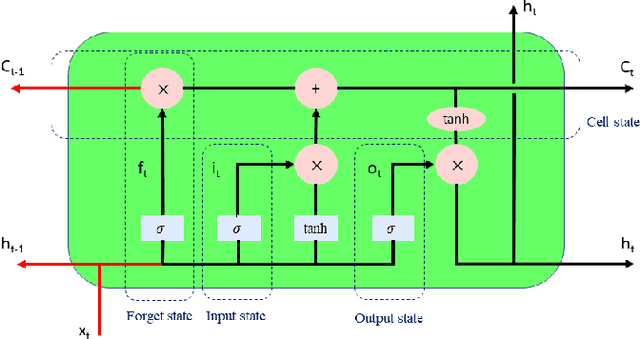
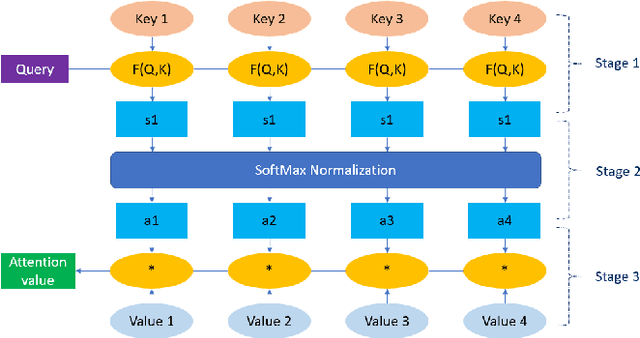
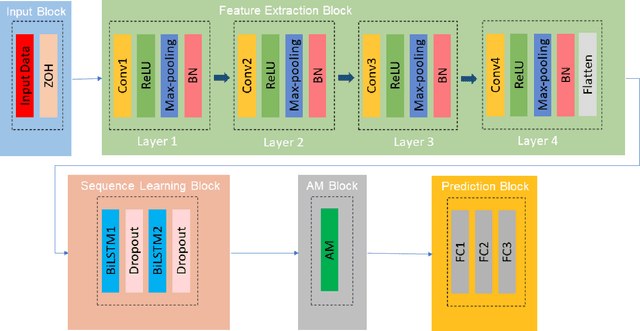
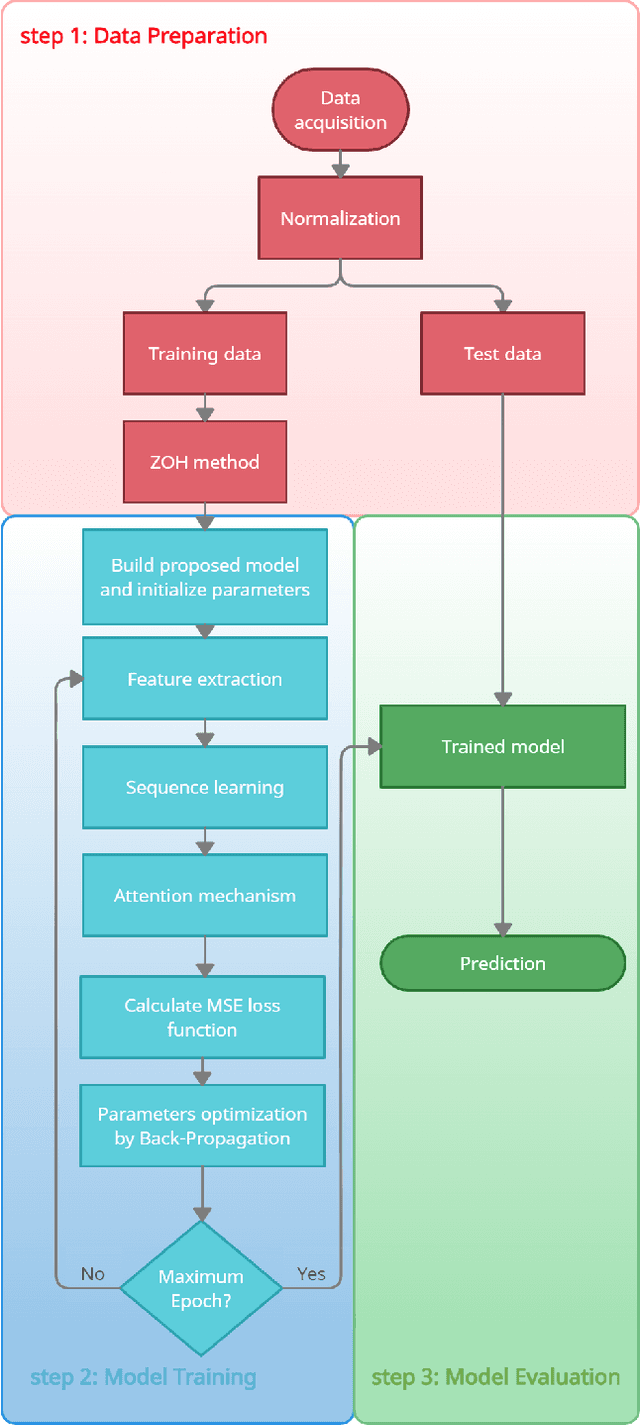
Abstract:Earthquakes, as natural phenomena, have continuously caused damage and loss of human life historically. Earthquake prediction is an essential aspect of any society's plans and can increase public preparedness and reduce damage to a great extent. Nevertheless, due to the stochastic character of earthquakes and the challenge of achieving an efficient and dependable model for earthquake prediction, efforts have been insufficient thus far, and new methods are required to solve this problem. Aware of these issues, this paper proposes a novel prediction method based on attention mechanism (AM), convolution neural network (CNN), and bi-directional long short-term memory (BiLSTM) models, which can predict the number and maximum magnitude of earthquakes in each area of mainland China-based on the earthquake catalog of the region. This model takes advantage of LSTM and CNN with an attention mechanism to better focus on effective earthquake characteristics and produce more accurate predictions. Firstly, the zero-order hold technique is applied as pre-processing on earthquake data, making the model's input data more proper. Secondly, to effectively use spatial information and reduce dimensions of input data, the CNN is used to capture the spatial dependencies between earthquake data. Thirdly, the Bi-LSTM layer is employed to capture the temporal dependencies. Fourthly, the AM layer is introduced to highlight its important features to achieve better prediction performance. The results show that the proposed method has better performance and generalize ability than other prediction methods.
Spatial Graph Convolutional Neural Network via Structured Subdomain Adaptation and Domain Adversarial Learning for Bearing Fault Diagnosis
Dec 11, 2021



Abstract:Unsupervised domain adaptation (UDA) has shown remarkable results in bearing fault diagnosis under changing working conditions in recent years. However, most UDA methods do not consider the geometric structure of the data. Furthermore, the global domain adaptation technique is commonly applied, which ignores the relation between subdomains. This paper addresses mentioned challenges by presenting the novel deep subdomain adaptation graph convolution neural network (DSAGCN), which has two key characteristics: First, graph convolution neural network (GCNN) is employed to model the structure of data. Second, adversarial domain adaptation and local maximum mean discrepancy (LMMD) methods are applied concurrently to align the subdomain's distribution and reduce structure discrepancy between relevant subdomains and global domains. CWRU and Paderborn bearing datasets are used to validate the DSAGCN method's efficiency and superiority between comparison models. The experimental results demonstrate the significance of aligning structured subdomains along with domain adaptation methods to obtain an accurate data-driven model in unsupervised fault diagnosis.
A Recursive Delay Estimation Algorithm for Linear Multivariable Systems with Time-varying Delays
Sep 06, 2021



Abstract:Time delay estimation plays a critical role in control, stabilization and state estimation of many practical system with time delay. In this paper, we propose a method to estimate delay for discrete time linear multiple-input multiple-output systems with time-varying input delays. This method is purposefully given for situations where only a limited amount of information is available for the system. Although, this approach is primarily developed in a deterministic framework, it can also be applied to noisy data under special circumstances. In addition, switched linear autoregressive models with exogenous inputs are introduced as possible applications of the presented algorithm provided that the switching frequencies are small. Finally, effectiveness of the algorithm is illustrated by two numerical examples.
 Add to Chrome
Add to Chrome Add to Firefox
Add to Firefox Add to Edge
Add to Edge